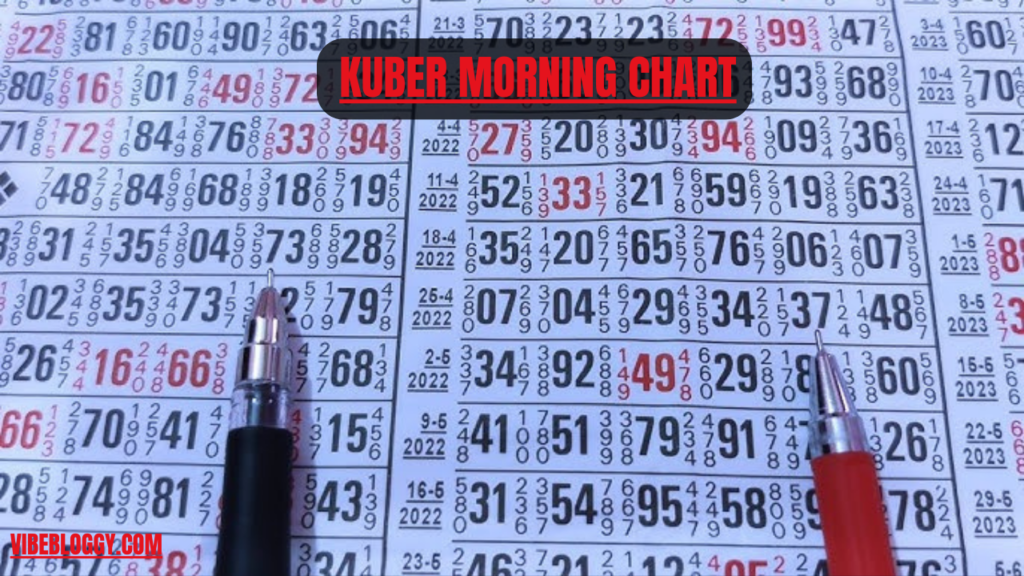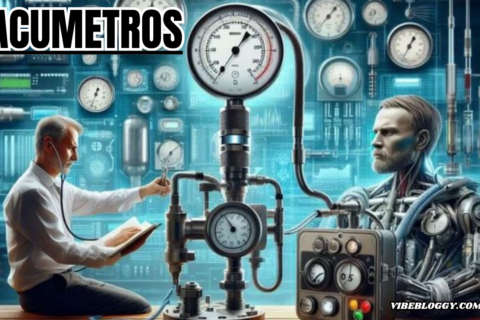Introduction
The Kuber Morning Chart is a crucial component of the Kuber Satta Matka game, which is a popular lottery-style betting game in India. This chart displays the results of draws that occur throughout the morning, helping players track winning numbers and make informed betting decisions. Updated regularly, the Kuber Morning Chart provides specific time slots for draws, allowing participants to strategize their bets effectively based on previous outcomes. By monitoring this chart, players can enhance their gaming experience and potentially increase their chances of winning in subsequent rounds.
What is the Kuber Morning Chart?
The Kuber Morning Chart is a technical analysis tool used primarily by day traders and short-term investors. Named after Kuber, the god of wealth in Hindu mythology, this chart aims to provide a snapshot of market conditions early in the trading day. It helps traders forecast potential price movements and identify entry and exit points for their trades, making it a valuable resource for anyone looking to navigate the fast-paced world of stock market trading.
The chart’s primary focus is on price action, volume, and key technical indicators such as moving averages, RSI (Relative Strength Index), and support and resistance levels. By analyzing these elements, traders can better predict short-term trends and capitalize on them.
The Importance of the Kuber Morning Chart in Trading
In the world of trading, timing is everything. Successful traders know how to spot opportunities before they vanish, and the Kuber Morning Chart provides just that edge. It offers a concise but comprehensive look at the market’s mood during the early hours of trading, allowing for better decision-making.
This chart helps traders with:
Market Sentiment Analysis:
It provides an understanding of the overall direction the market is heading toward, whether bullish or bearish.
Risk Management:
With key levels of support and resistance identified, traders can set appropriate stop-loss levels to minimize risk.
Quick Entry and Exit:
For day traders, the first few hours of the trading day often provide the most volatile price movements. The Kuber Morning Chart offers insight into these movements, helping traders time their entry and exit points more precisely.
Components of the Kuber Morning Chart
The Kuber Morning Chart combines several essential technical elements that give traders an overview of the market’s early action. Let’s break down the main components of this chart and why they matter.
Price Action
Price action refers to the movement of a stock’s price over time. The Kuber Morning Chart focuses heavily on short-term price action, helping traders identify trends such as upward (bullish) or downward (bearish) movements early in the trading session. By observing price action, traders can make real-time decisions based on how the market is reacting to external events or internal dynamics.
Volume
The Volume is an essential metric in the Kuber Morning Chart. Volume represents the number of shares or contracts traded during a specific period. High volume can indicate significant interest in a stock, whereas low volume might suggest weak momentum. By observing volume patterns alongside price action, traders can gauge the strength or weakness of a market move.
Moving Averages
Moving averages smooth out price data to create a trend-following indicator. In the Kuber Morning Chart, both short-term (such as the 5-day or 10-day moving averages) and longer-term moving averages (such as the 50-day moving average) are used to identify the direction of the market. Traders often use the crossing of these moving averages as buy or sell signals.
Support and Resistance Levels
The Support and resistance levels are critical in predicting price reversals. Support levels act as price floors, where the stock may find a “floor” during a downward move, while resistance levels serve as price ceilings where a stock may struggle to break through during an upward trend. The Kuber Morning Chart emphasizes these levels, as they can dictate key points where traders should either enter or exit their positions.
Relative Strength Index (RSI)
RSI is a momentum oscillator used to identify overbought or oversold conditions in a stock. On the Kuber Morning Chart, RSI levels can signal whether a stock is ready for a reversal. An RSI above 70 generally indicates that a stock is overbought (and may soon decline), while an RSI below 30 suggests that the stock is oversold (and may be due for a rise).
How to Read the Kuber Morning Chart
Reading the Kuber Morning Chart requires an understanding of its core indicators. Traders must develop the ability to interpret the signals and make decisions based on their analysis. Below are some key steps to help you read the Kuber Morning Chart effectively.
Step 1: Start with Price Action
Begin by looking at the price action to identify whether the stock is trending upward, downward, or moving sideways. If the stock shows strong momentum in one direction, it could indicate a continuation of that trend for the rest of the trading day.
Step 2: Analyze Volume
Next, check the volume to confirm price movements. If you see a strong upward or downward move accompanied by high volume, the price action is likely to be more sustainable. However, if the price is moving with low volume, be cautious, as it may not be a reliable trend.
Step 3: Observe Moving Averages
Look at the moving averages to see if any crossovers have occurred. If a short-term moving average (like the 5-day) crosses above a longer-term moving average (like the 50-day), this could be a buy signal. Conversely, if a short-term moving average crosses below a longer-term one, it might be time to sell or short the stock.
Step 4: Check Support and Resistance Levels
Identify the key support and resistance levels. If the stock is approaching a support level, it could bounce back, presenting a buying opportunity. On the other hand, if the stock is nearing resistance, it might face selling pressure, indicating a potential short position or profit-taking opportunity.
Step 5: Review the RSI
Lastly, take a look at the RSI. If the RSI is approaching the overbought range (above 70), be cautious of a potential pullback. If it’s in the oversold zone (below 30), the stock may be poised for a rebound, offering a buying opportunity.
Benefits of Using the Kuber Morning Chart for Day Trading
For day traders, the Kuber Morning Chart offers several key advantages. Here’s why this chart can be an indispensable tool in a trader’s arsenal.
Identifying Short-Term Trends
The Kuber Morning Chart excels at identifying short-term trends, giving traders insight into how a stock might behave during the trading day. By capturing price action and key indicators during the early hours, this chart provides traders with the data needed to make informed, quick decisions.
Improved Risk Management
Traders who use the Kuber Morning Chart can better manage risk. By identifying support and resistance levels, traders can set effective stop-loss orders to limit their losses in the event of a reversal. Additionally, by using the RSI, traders can avoid entering overbought or oversold positions, reducing the chances of getting caught in a losing trade.
Faster Decision-Making
The chart simplifies the process of interpreting the market’s early signals. With multiple indicators on one screen, traders can quickly assess whether they should enter or exit a trade. This speed is especially important for day traders, who rely on fast reactions to capitalize on market volatility.
Kuber Morning Chart vs. Other Technical Charts
While there are numerous types of technical charts available to traders, the Kuber Morning Chart has unique features that set it apart from others like the candlestick chart or line chart.
More Focus on Early Market Movements
Unlike many charts that focus on broader time frames, the Kuber Morning Chart centers on the first hours of the trading day, where many significant price movements occur. This makes it particularly useful for day traders who want to capitalize on early volatility.
Incorporates Multiple Indicators
The Kuber Morning Chart integrates several key indicators, including price action, volume, moving averages, and RSI, making it more comprehensive than simpler charts like line or bar charts. These additional layers of information provide a more holistic view of the market.
How to Incorporate the Kuber Morning Chart into Your Trading Strategy
Incorporating the Kuber Morning Chart into your trading strategy can enhance your decision-making process, but it’s essential to have a solid plan in place. Here’s how to effectively integrate it into your daily trading routine.
Set Daily Trading Goals
Before the market opens, outline your goals for the day. What stocks or assets are you planning to trade? How much risk are you willing to take? By setting goals in advance, you can use the Kuber Morning Chart to guide your strategy and stay focused on your targets.
Use the Chart for Pre-Market Analysis
Many traders begin their day by using the Kuber Morning Chart to conduct a pre-market analysis. By reviewing pre-market activity, traders can get a sense of potential price gaps and anticipate market direction for the day. This early preparation helps traders execute trades with confidence once the market opens.
Combine the Chart with Fundamental Analysis
While the Kuber Morning Chart focuses on technical analysis, it’s essential to also consider fundamental factors such as earnings reports, economic data, or company announcements that may affect stock prices. By combining both approaches, traders can form a well-rounded strategy.
Conclusion
The KuberMorning Chart serves as a powerful tool for traders looking to capture market opportunities in the early hours of the trading day. Its ability to provide real-time insights into price action, volume, and key technical indicators helps traders make informed decisions, manage risk effectively, and capitalize on short-term trends. By incorporating the KuberMorning Chart into your trading strategy, you can improve your timing, increase your profitability, and navigate the fast-paced world of day trading with confidence.
Also Read: Internet Chicks: The Power of Female Creators Online
FAQs
What is the KuberMorning Chart?
The KuberMorning Chart is a technical analysis tool that focuses on early price movements, volume, and key indicators like moving averages, RSI, and support/resistance levels to help traders make informed decisions during the first hours of the trading day.
Who should use the KuberMorning Chart?
The chart is ideal for day traders, short-term investors, and anyone who trades in fast-moving markets where early analysis of price action and volume can provide a significant advantage.
How can the KuberMorning Chart help with risk management?
The chart highlights critical support and resistance levels, allowing traders to place stop-loss orders effectively and manage risk by identifying overbought or oversold conditions using the RSI.
How do I read the KuberMorning Chart?
To read the chart, analyze the price action, volume, moving averages, support and resistance levels, and RSI to predict potential market moves and guide your trades.
Can I combine the KuberMorning Chart with other tools?
Yes, the chart works well alongside other technical and fundamental analysis tools to create a comprehensive trading strategy.
Is the KuberMorning Chart only for stock trading?
No, while primarily used for stock trading . The chart can be adapted for other financial markets such as forex, commodities, and cryptocurrencies.






